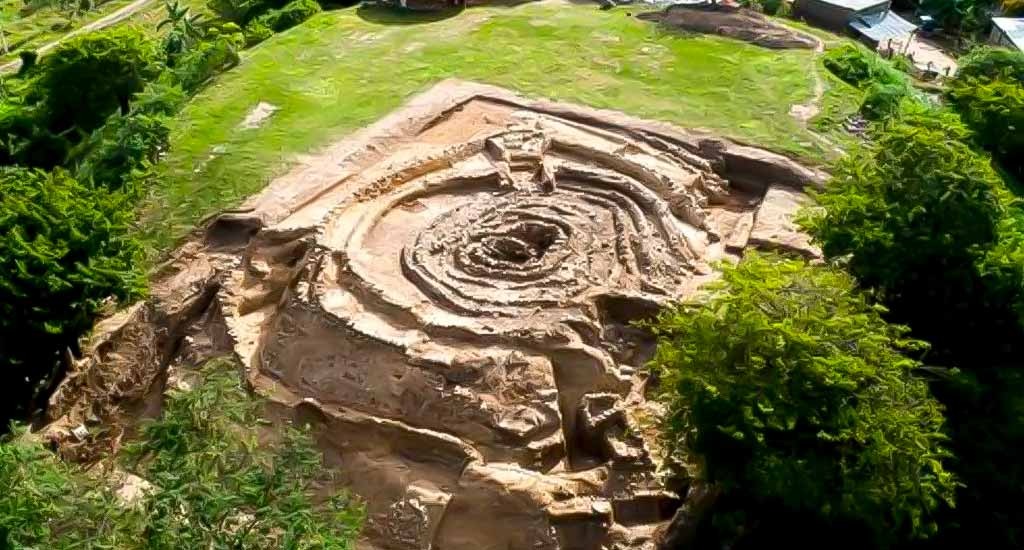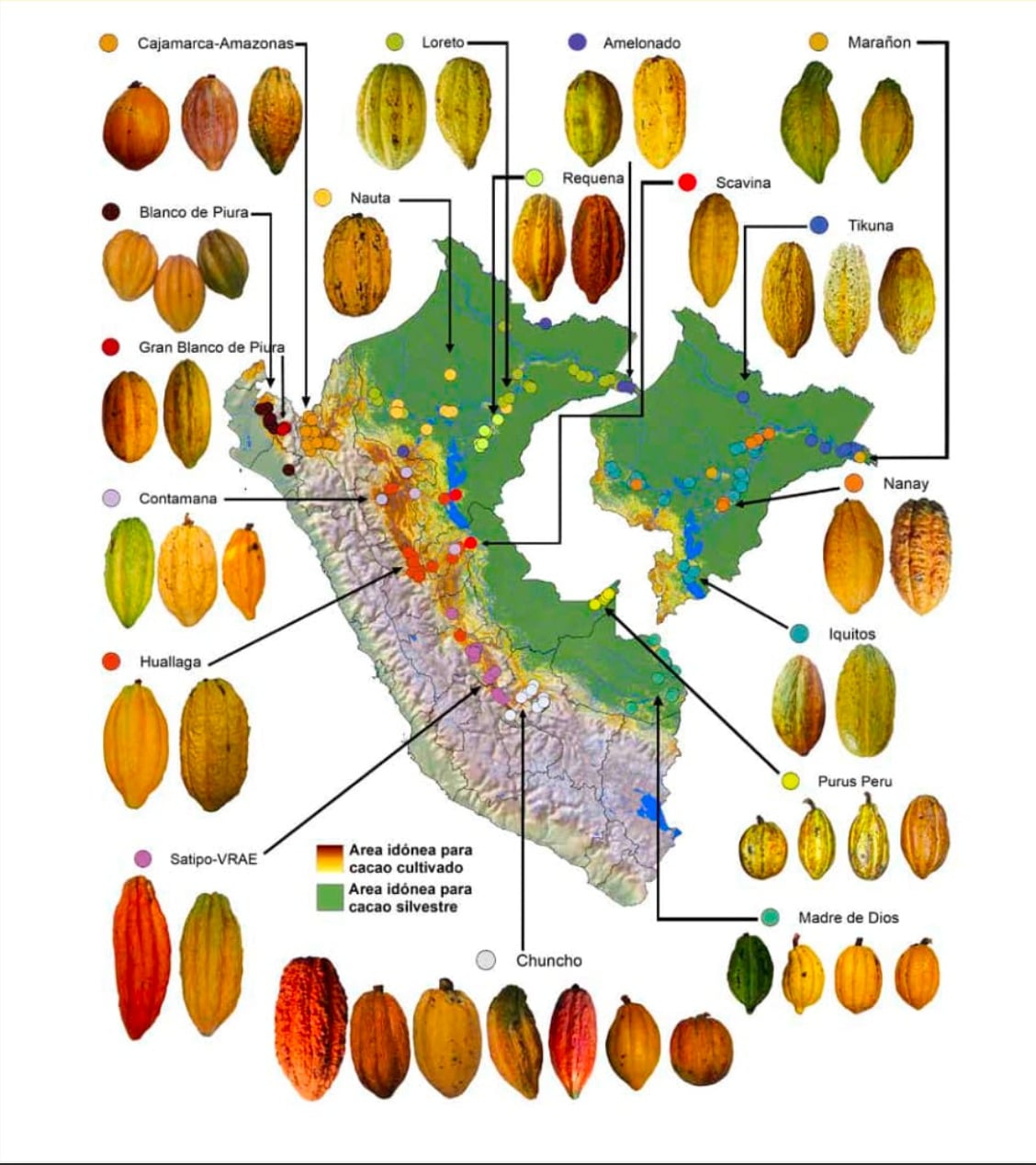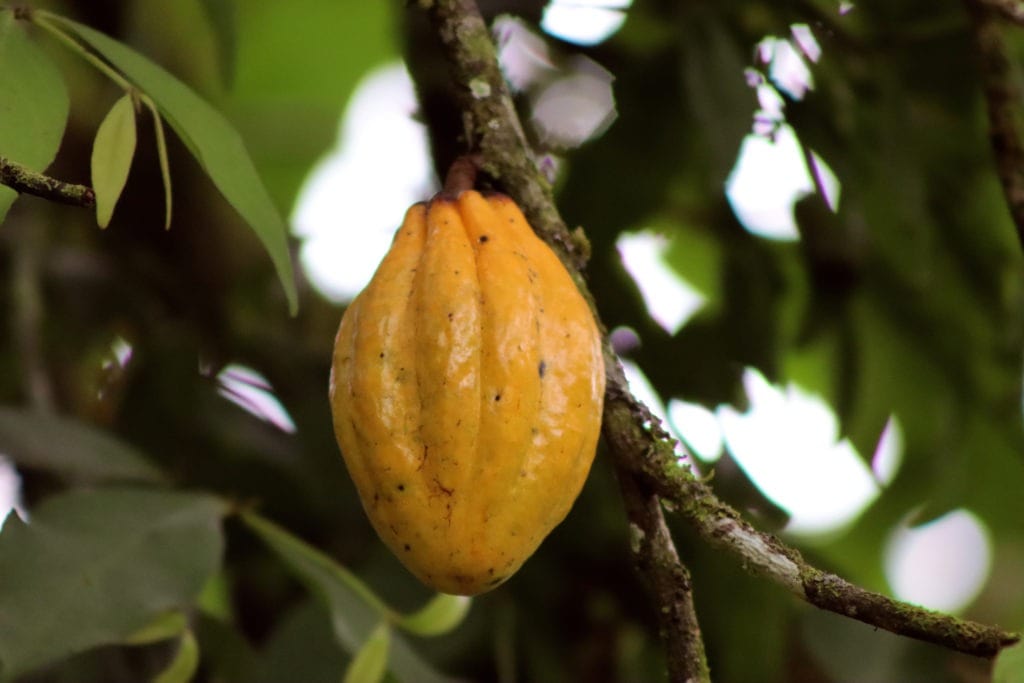Peru is home to one of the world’s greatest genetic treasures – cacao. This country, renowned for its incredible biodiversity, plays a key role in the history, cultivation, and dissemination ofcacao. In this article, we will explore the origin ofcacao, its significance for Peru, the importance of diversity, and the uniqueness of Peruviancacao varieties.
The Origin of Cacao – A Gift from the Amazon
Cacao originates from the Amazon rainforest, as evidenced by genetic and archaeological research. Over 10 million years ago, when South America began forming into its present-day shape,cacao trees emerged as an adaptation to new geographic conditions. Later, around 2.7 million years ago, the formation of the Isthmus of Panama connected North and South America, allowingcacao to spread to Central America and beyond.
Archaeological findings in Peru, particularly from the Mayo-Chinchipe-Marañón culture, reveal the oldest evidence ofcacao use in the world – dated to more than 5,300 years ago. By comparison, the first mentions ofcacao in Central America appear some 2,000 years later, highlighting Peru’s importance as the original home ofcacao.

Montegrande Temple (Cajamarca), cradle of cacao. Source: https://domiruthperutravel.com/es/blog/conoce-la-huaca-montegrande-donde-se-hallo-el-cacao-mas-antiguo-de-la-historia/
History and Spread of Cacao
For centuries,cacao has been an important part of trade routes and cultural traditions. When Spanish conquistadors discoveredcacao in the Caribbean and Central America, its unique taste and ritual significance fascinated them. They exported it to Europe, where it quickly became a symbol of luxury.
Historically,cacao is divided into three main groups:
- Criollo – Originally cultivated in the Caribbean, known for its delicate flavor but susceptible to diseases.
- Forastero – A variety from Brazil, more resistant to diseases, but with a less complex flavor profile.
- Trinitario – A hybrid between Criollo and Forastero, created after epidemics that destroyed Criollo plantations.
The Forastero variety became the foundation for masscacao cultivation, especially in Africa, which today accounts for up to 60% of global production. In contrast, Peru contributes only 2%, but its importance lies in quality and diversity rather than quantity.
Why is Cacao Diversity Important?
Cacao diversity is crucial for:
- Disease and climate resilience – A wide genetic variability increases the chances that some varieties will survive adverse conditions.
- Unique flavors – Each variety offers a distinct flavor profile, ranging from floral and fruity notes to earthy or nutty complexity.
- Economic and cultural value – Traditional varieties such as Chuncho or Cacao Blanco are prized in premium markets and support local communities.
Cacao Diversity in Peru
Modern genetic studies have revealed that there are 25 genetic groups of cacao in the world, of which 18 originate in Peru. This means Peru possesses more than 70% of the world’s cacao diversity. The country has greater diversity within its borders than all other countries combined.
Some of the most important Peruvian varieties include:
- Cacao Chuncho – A treasure from Cusco, known for its rich aroma and delicate notes.
- Cacao Blanco del Alto Piura – Rare white beans with citrus and almond flavors.
- Cacao Nativo – Traditional varieties from the Ucayali and Huánuco regions, associated with Amazonian cultures.

Peruvian cacao varieties. Source: Thomas, E.; Lastra, S.R.L.; Zavaleta, D.P. (2023) Catálogo de cacaos de Perú. Lima (Peru): Bioversity International; MOCCA.149 p.
Peruvian cacao is not just a crop – it is a cultural symbol and a legacy of ancient civilizations. Each variety carries a story of the land, the community, and the traditions that cultivate it. Unlike monocultures dominating the global market, Peru offers cacao that celebrates biodiversity, quality, and authenticity.
Industrial chocolate producers often prefer cacao with high productivity and disease resistance. However, true cacao enthusiasts appreciate the essence of Peruvian varieties – their unmistakable quality and origin. Every gram of Peruvian cacao is a reminder that unique things deserve special care and respect.

Preserving Cacao Diversity – Our Shared Responsibility
Protecting cacao varieties is essential for the future of the chocolate industry. Investing in local farmers, promoting fair trade, and supporting sustainable cultivation are steps that ensure this genetic wealth does not disappear.
